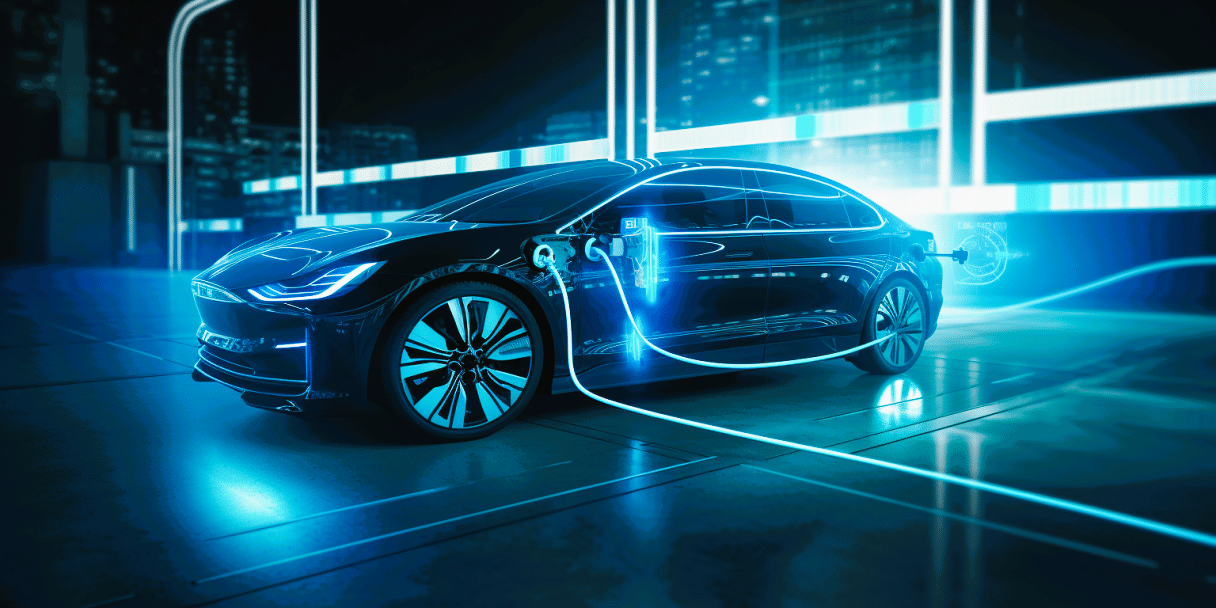The Future of Electric Vehicle Charging: The Global Shift towards V2G and V2X EV charging technology
As the world increasingly leans towards sustainable energy solutions, the market for electric vehicles (EVs) is experiencing unprecedented growth. This surge in demand is driving the need for more robust and efficient EV charging infrastructures. Emerging technologies like Vehicle-to-Grid (V2G) and Vehicle-to-Everything (V2X) are revolutionizing the EV charging landscape, offering promising solutions that can significantly impact energy management and grid stability. 
Unraveling V2G: A Two-way Energy Exchange
V2G, an abbreviation for Vehicle-to-Grid, is an innovative technological solution that allows electric vehicles to interact with the power grid in a two-way mode. Unlike traditional EV charging, which only involves drawing power from the grid, V2G enables EVs to feed excess capacity back into the grid from their onboard batteries. This bi-directional energy flow is pivotal to maintaining energy equilibrium, particularly relevant in the face of the unpredictable nature of renewable energy sources.
V2X: Broadening the Scope of Energy Applications
While V2G focuses on grid interactions, V2X, short for Vehicle-to-Everything, broadens the energy application scope. This technology umbrellas various energy interactions, including Vehicle-to-Home (V2H), Vehicle-to-Building (V2B), and V2G. This means EVs can power homes, office buildings, and more, making them versatile energy solutions, especially when grid feedback isn’t an option.
The Potential Impact of V2G and V2X Technologies
The advent of V2G and V2X technologies has turned EVs from mere transportation modes into active participants in the energy sector. With an estimated 140-240 million EVs on the road by 2030, a staggering combined storage capacity of about 7 TWh. This vast potential can be harnessed to manage the exponential growth in renewable energy without necessitating substantial hardware investments.
V2G Benefits Spanning Various Sectors
V2G technology offers many benefits. For EV owners, it offers convenient charging options and alleviates range anxiety. For businesses, offering EV charging amenities can attract and retain customers. It also provides load management strategies for utility companies to balance electricity demand and supply on the grid. Furthermore, property owners can reduce grid dependency during peak consumption intervals. Most importantly for society, it reduces greenhouse gas emissions, improves air quality, and fosters economic growth.
V2G and V2X Technologies Around the World
Several pilot programs and research projects are underway to test the viability of V2G and V2X technologies. These initiatives are spread across various countries, including the UK, Japan, the US, Germany, and South Korea. These projects aim to showcase how V2G can reduce carbon emissions, lower energy costs, and provide ancillary services to the grid.
- In the UK, a project called e4Future aims to demonstrate how V2G can support the grid and benefit EV owners. The project involves installing 1,000 V2G chargers across the UK and connecting them to a cloud platform that can optimize the charging and discharging of the EVs. The project hopes to show how V2G can reduce carbon emissions, lower energy costs, and provide ancillary services to the grid1.
- A Japanese company, Nuvve, provides V2G services to EV owners and fleet operators. Nuvve has partnered with Nissan, Mitsubishi, and Honda to enable their EVs to participate in V2G. Nuvve also operates a V2G aggregation platform that can manage the bidirectional flow of electricity between the EVs and the grid. Nuvve claims that its V2G technology can generate revenue for EV owners and reduce the stress on the grid.
- US utility company PG&E is launching three new V2X pilot programs to test how bidirectional EV charging can lower utility costs and improve grid reliability. The programs will allow EV owners to use their vehicle’s battery to power their homes or businesses during outages, charge their cars during off-peak hours, and earn incentives for sending energy back to the grid during peak hours. The programs will also involve installing bidirectional chargers at homes, workplaces, and microgrids3.
- A German research project called Bidirectional Charging Management is developing a V2X system to integrate EVs into the energy and mobility sectors. The project involves testing various use cases of V2X, such as providing backup power, balancing renewable energy, and optimizing charging behavior. The project also aims to create a V2X standard that can be adopted by different EV manufacturers and charging operators4.
- In South Korea, Hyundai is launching a new EV model called the Ioniq 5 that features V2X capabilities. The Ioniq 5 can use its battery to power other devices, such as laptops, smartphones, or camping equipment. The Ioniq 5 can also supply electricity to another EV or the grid using a special adapter. Hyundai claims that the Ioniq 5 can offer up to 3.6 kW of power output, enough to run a medium-sized air conditioner.
The Future of EV Charging
The rapid progression in EV charging infrastructure significantly accelerates the shift to electric vehicles. Innovations like high-speed charging stations, wireless charging, and smart charging solutions are central to this transformation. Vehicle-to-grid (V2G) and Vehicle-to-Everything (V2X) technologies are expected to be crucial in offering efficient and sustainable EV charging solutions.
Despite challenges such as technological compatibility, inadequate infrastructure, and grid congestion, the push towards a greener future drives the continuous development and adoption of V2G and V2X technologies. Addressing these challenges through innovative solutions and regulatory policies can further speed up this transition, leading to a cleaner and more sustainable transportation landscape.

